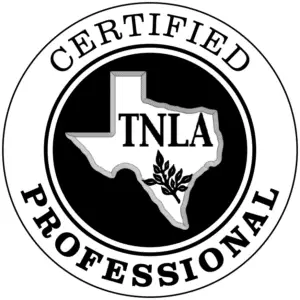The words “native plant” can have a wide interpretation because Texas is an incredibly large state. Due to the potential for a particular species to be invasive under different climate and soil conditions, a plant growing in one part of the state is not necessarily considered native to another part. Understanding your USDA gardening zone is the recommended method for selecting the plants most likely to thrive in your area. Even East Texas spans multiple garden zones due to its size, varying elevations, and proximity to the coast. Once you know your zone, you can dive a little deeper into which plants are native to your area.
So why the big push for native plants? One reason is to create a welcoming environment for pollinators like bees, butterflies, moths, and hummingbirds. Replacing vegetation lost to environmental factors like development or drought will help revitalize the ecosystem in your area. Fireflies used to be a common sight, but today their numbers are in decline. Native plants have evolved over centuries to survive in a particular region’s climate, soil, and ecosystem. These adaptations include a mutually beneficial relationship between plants and wildlife. The plants offer shelter, nectar, pollen, and seeds to feed birds and other small animals. In turn the insects, birds and mammals spread seeds and help pollinate to encourage additional growth.
The post oak savannahs and piney woods of East Texas may seem lush and have an abundant water supply with all our lakes, but we have all lived through drought and water rationing. This is an ongoing concern and can cause headaches for the homeowner. By utilizing plants adapted to your area you can rely on watering less. Native plants can contribute to water conservation with their deep roots that help prevent soil erosion and reduce runoff. Another advantage is reduced fertilizer costs. Remember, native plants provide food and habitat for pollinators. By not using pesticides, you are protecting pollinators.
If you like history, there are native plant species that have a fascinating historical connection from medicinal values to symbolic meanings. In some cases, native plants can be propagated and shared with others in your community. The Texas bluebonnet, our iconic state flower, is an easy to grow wildflower that attracts pollinators in early spring. Texas sage is a heat tolerant beauty that sports purple flowers and silvery foliage. The Texas red-bud and Texas mountain laurel are both drought tolerant options for small flowering trees and shrubs. Texas lantana provides a pop of color and requires little water. Purple cone flowers can tolerate both heat and humidity, making it an excellent choice in East Texas. Drought-tolerant coreopsis is a fantastic choice for pollinators. Salvia greggii and Turk’s Cap provide a splash of red in the garden and are favorite plants of hummingbirds.
There are so many options to choose from, it may seem overwhelming. Working with a landscape designer can help make the process of accommodating spacing, water requirements, sun, and soil preferences go smoothly. A designer can help you incorporate a mix of textures, height and color as well as finding plants that will provide visual interest year-round. In addition, we test the soil free of charge to ensure the plants have the best odds of thriving. We can source your plants for you, so you receive the correct species and variety best suited to your area. Our team can prepare your flower beds, improve soil conditions if necessary and install irrigation and drainage if needed. Finally, we can install your plants, complete with mulch, and even add landscape lighting so you can enjoy your yard after the sun goes down. We know landscaping is an investment that will add value to your property. We offer financing for landscape projects. Give us a call to learn more about transforming your yard into a gorgeous native plant habitat.










